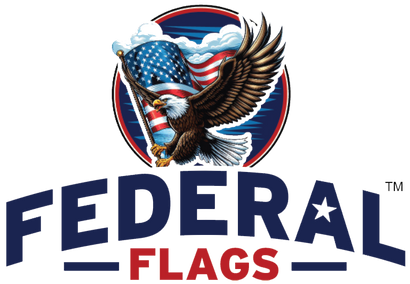Your Cart is Empty
United States Flag Code: Guidelines, Rules and Etiquette
3 min read
The American flag is a ubiquitous presence in everyday life. Rarely does a day go by that you don’t see a flag flying high. What you may not know as you pass by the flag is that a set of rules governs conduct around and concerning it. By understanding American flag etiquette, rules, and guidelines and putting that understanding into action, you’ll show the American flag its proper respect while also modeling positive behaviors and attitudes for others.
What Is the United States Flag Code?
The United States Flag Code provides guidelines for how to correctly display the American flag. Chapter 1, Title 4 of the United States Code explains the official specifications of the Flag of the United States and how to use, display, and observe it. The Flag Code outlines when and how the flag should be raised, flown, and lowered each day. It also proscribes many actions that could involve the flag.
How To Display a United States Flag Properly
By displaying the American flag properly, this shows a sign of respect for the flag and the country it represents. Here are some important rules/guidelines to follow when displaying the flag:
- The union (the stars) should always be in the upper left corner when displaying the flag horizontally or vertically against a wall or a window. Do not display the flag upside down, except as a distress signal.
- When mourning, the flag should be displayed at half-staff. Initially hoisted to the peak for an instant and then lowered to half-staff. When the flag is lowered, it should again be raised to the peak before it is fully lowered.
- When displaying the flag on a flagpole, it should be hoisted quickly and lowered ceremoniously. The flag should never touch the ground or any other object beneath it.
- When displaying multiple flags on the same flagpole, the flag should always be at the highest point. If multiple flags aren’t displayed on the same flagpole, the flag should be placed in the center and higher than the other flags.
- When carrying the flag in a parade or procession, it should be to the right of all other flags or banners.
- When displayed at night, the flag should be illuminated. At sunset it should be taken down, unless it is properly lit.
- When displaying the flag outdoors and the weather is cold or wet, the flag should be made of weather-resistant material. Do not display the flag during severe weather conditions unless it's an all-weather flag.
- When covering a casket with the flag, ensure it is positioned so that the union (the stars) is at the head of the casket and over the left shoulder of the deceased.
- When folding the flag, ensure it is folded in a triangular shape with only the blue field and stars visible.
- Never use the flag for advertising purposes.
- The US Flag Code does not prescribe penalties for violations. However, it is important to respect the guidelines as a sign of patriotism and respect for the country.
Learn more about American flag etiquette and flag flying days here.
Why Follow the United States Flag Code?
Though codified in law, the Flag Code is customary rather than legally binding. In other words, you won’t go to prison for dragging an American flag through the dirt or for wearing it as a cape. You may, however, earn some looks of shock, disdain, and general ire from the people around you who do choose to observe the tenets of the Flag Code. Respect for the flag is especially important in the presence of our military veterans who have made tremendous sacrifices and often witnessed ultimate sacrifices in the name of the values our flag represents. Not only is public respect for the flag important in avoiding a dreadful social faux pas, but it’s simply the best way to do right by your fellow Americans.
Observing the United States Flag Code
Once you understand American flag etiquette, rules, and guidelines, you can put these concepts into action for yourself. At summer cookouts, avoid misrepresenting the flag by hanging red, white, and blue bunting instead. Dispose of a worn-out flag by taking it to your local American Legion post or a dedicated receptacle for retired flags. When it comes time for a replacement, consider Federal Flags as your resource to buy American flags and flag-related accessories so you may continue to uphold the Flag Code each day.
Also in Federal Flags Resources
Subscribe
Sign up to get the latest on sales, new releases and more …







